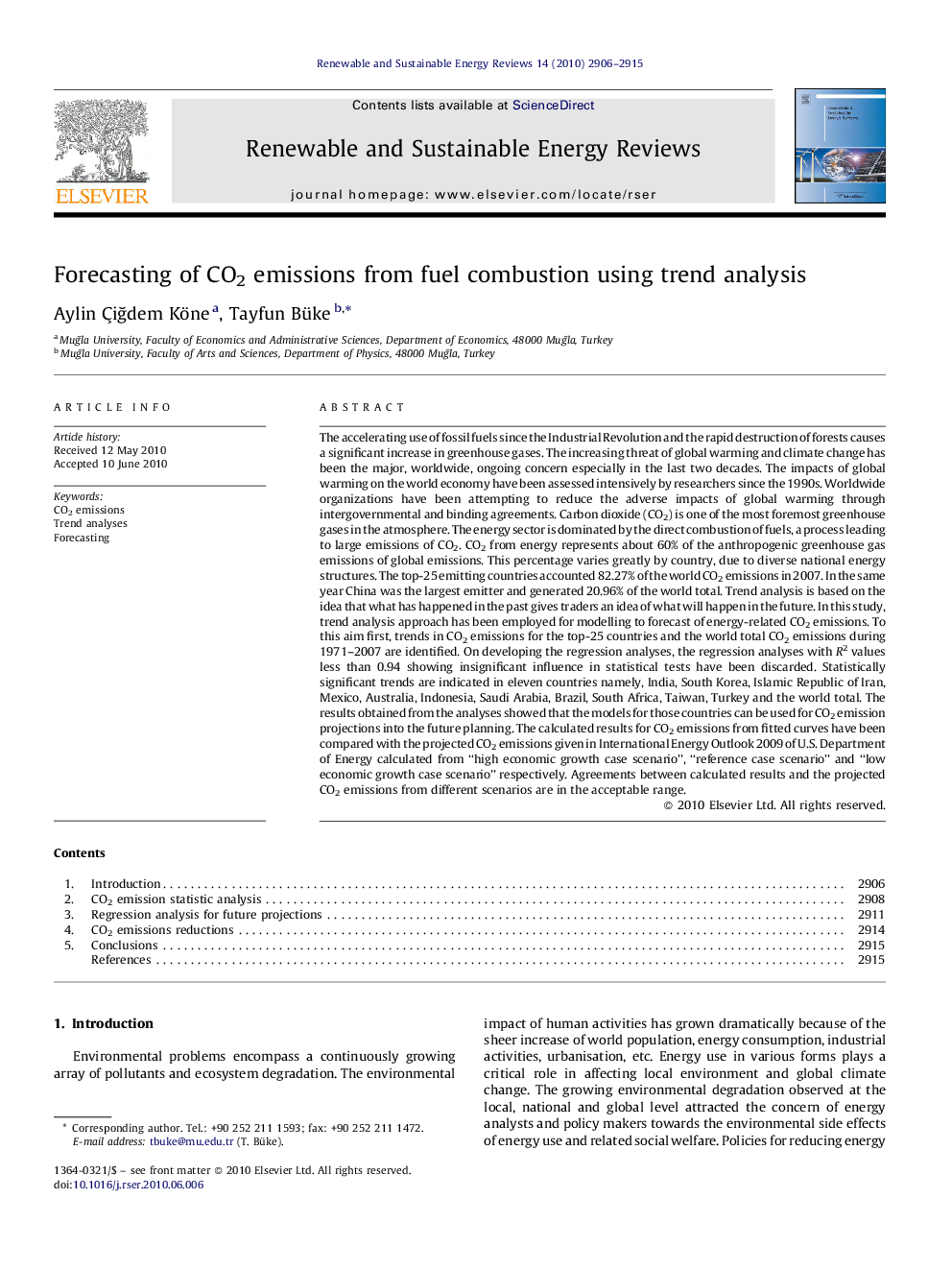| کد مقاله | کد نشریه | سال انتشار | مقاله انگلیسی | نسخه تمام متن |
|---|---|---|---|---|
| 1751685 | 1018421 | 2010 | 10 صفحه PDF | دانلود رایگان |

The accelerating use of fossil fuels since the Industrial Revolution and the rapid destruction of forests causes a significant increase in greenhouse gases. The increasing threat of global warming and climate change has been the major, worldwide, ongoing concern especially in the last two decades. The impacts of global warming on the world economy have been assessed intensively by researchers since the 1990s. Worldwide organizations have been attempting to reduce the adverse impacts of global warming through intergovernmental and binding agreements. Carbon dioxide (CO2) is one of the most foremost greenhouse gases in the atmosphere. The energy sector is dominated by the direct combustion of fuels, a process leading to large emissions of CO2. CO2 from energy represents about 60% of the anthropogenic greenhouse gas emissions of global emissions. This percentage varies greatly by country, due to diverse national energy structures. The top-25 emitting countries accounted 82.27% of the world CO2 emissions in 2007. In the same year China was the largest emitter and generated 20.96% of the world total. Trend analysis is based on the idea that what has happened in the past gives traders an idea of what will happen in the future. In this study, trend analysis approach has been employed for modelling to forecast of energy-related CO2 emissions. To this aim first, trends in CO2 emissions for the top-25 countries and the world total CO2 emissions during 1971–2007 are identified. On developing the regression analyses, the regression analyses with R2 values less than 0.94 showing insignificant influence in statistical tests have been discarded. Statistically significant trends are indicated in eleven countries namely, India, South Korea, Islamic Republic of Iran, Mexico, Australia, Indonesia, Saudi Arabia, Brazil, South Africa, Taiwan, Turkey and the world total. The results obtained from the analyses showed that the models for those countries can be used for CO2 emission projections into the future planning. The calculated results for CO2 emissions from fitted curves have been compared with the projected CO2 emissions given in International Energy Outlook 2009 of U.S. Department of Energy calculated from “high economic growth case scenario”, “reference case scenario” and “low economic growth case scenario” respectively. Agreements between calculated results and the projected CO2 emissions from different scenarios are in the acceptable range.
Journal: Renewable and Sustainable Energy Reviews - Volume 14, Issue 9, December 2010, Pages 2906–2915